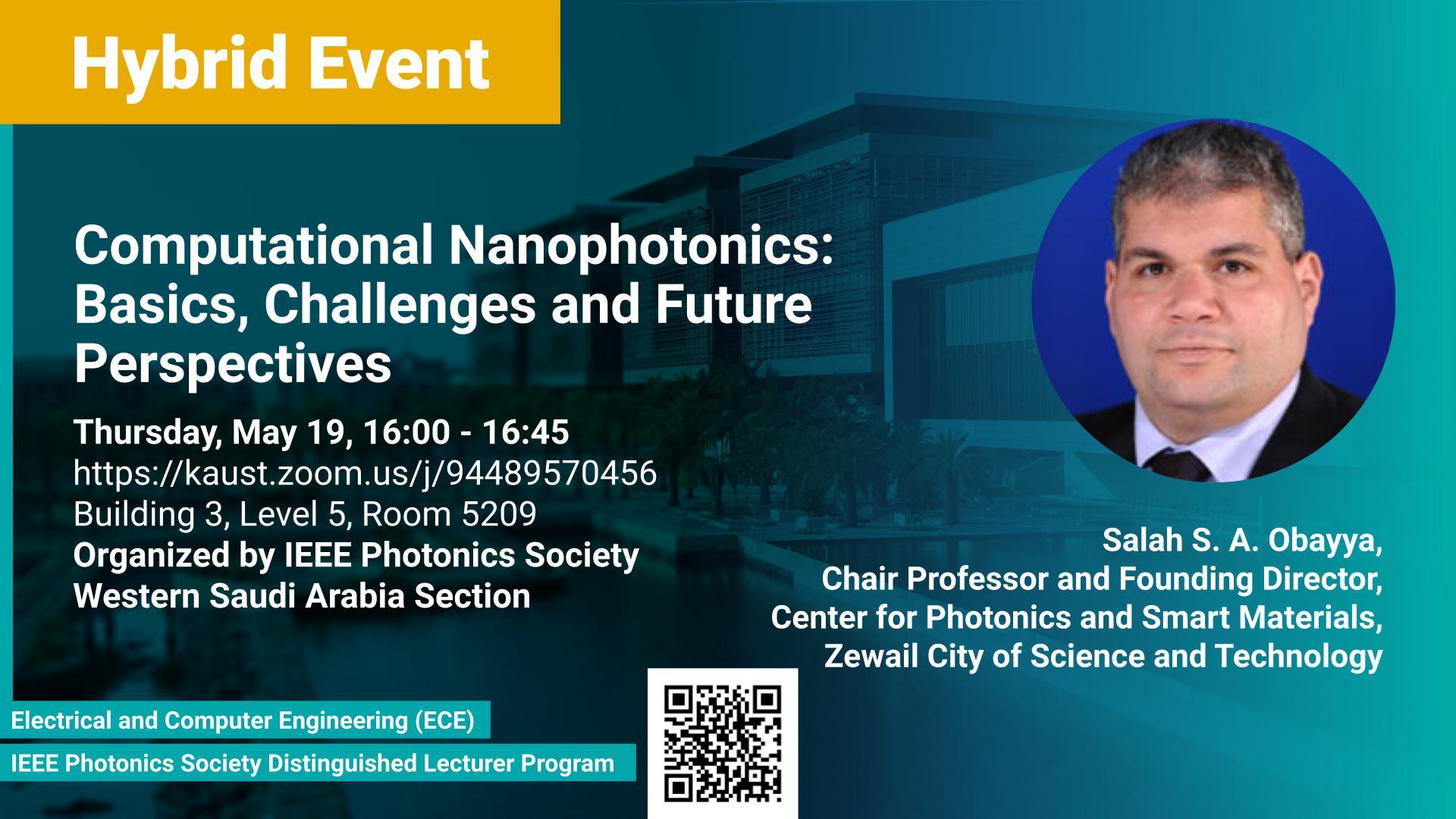Abstract
Nanophotonics modelling for 21st century applications is becoming vital. The computational modeling provides a fundamental understanding of the relying physics behind the operation of photonic devices. However, computational modeling is still a challenge as some of the existing modeling techniques fail to capture the correct behavior of nano-photonic devices. In this regard, this talk will introduce an overview of the existing computational modeling tools for analyzing photonic devices, in general, and highlighting their salient features and shortcomings. It is well known that “plasmonics” plays a vital role now in localising the optical field beyond the diffraction limit and hence in integrated optics. Therefore, the talk will focus on plasmonics modeling issues and the failure of the classical electromagnetic solvers to accurately characterize the nano-plasmonic devices. Therefore, new accurate and stable beam propagation method will be introduced for analyzing plasmonics in the classical regime. The rigor of this approach is mainly because of relying on the finite elements method and the twice faster Blocked Schur algorithm which can exactly represent all the wide spectrum of radiation, evanescent, and surface modes produced by the strong discontinuity between metal and its surroundings. Moreover, in merging quantum plasmonic devices, it becomes essential to introduce “Quantum Corrected Model (QCM)” in order to accurately model these devices, and the basics of QCM will be also discussed.
Brief Biography
Professor Salah S. A. Obayya joined Zewail City of Science and Technology (ZC) in 2012 where he is now Chair Professor and Founding Director of Center for Photonics and Smart Materials (CPSM). He occupied the positions of the Vice Chairman of ZC and Director-General of Research Institutes at the same institution. Prior to Zewail City, he took up several academic posts at Brunel University UK (tenured Associate Professor, 2002), University of Leeds, UK (tenured Professor, 2006) and University of South Wales, UK (tenured Chair Professor, 2008) where he was the Founding Director of Photonics and Broadband Communications (PBC) Research Center and also he was the Director of Postgraduate Programs at the same institution.
